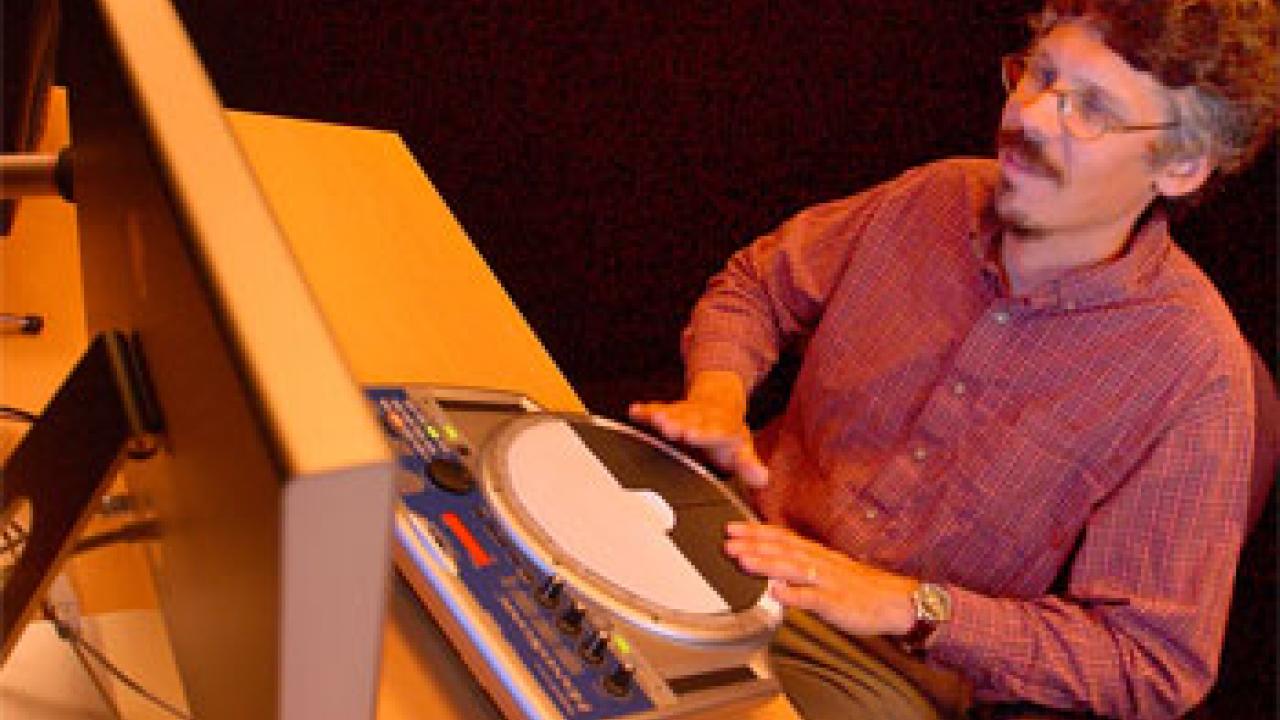Petr Janata, neuroscientist and devoted Deadhead, wants to know why one of life's most transcendent experiences -- being in "the musical groove" -- is such a heady experience.
Using nearly $1 million from the Metanexus Institute, Janata, a UC Davis assistant professor of psychology and a faculty member in the Center for Mind and Brain, will have the opportunity to figure it out.
He will spend the next three years leading a study of music, spirituality, religion and the human brain, thanks to the John Templeton Foundation, which is funding the Metanexus Institute as part of its mission to advance religion and science.
Janata and his co-investigator, religious studies researcher Robin Sylvan of the nonprofit Sacred Center in Oakland, will study states of consciousness among six groups that represent a broad spectrum of religious and spiritual experiences.
"It's just become clear in the past six years that you can't talk about a single part of the brain interpreting music," Janata says. "There are so many different ways to engage in musical behavior from the detached listener to the active performer, and then there are those in between."
And that is just who he will be studying: the listeners "in between" who become performers when they are rocking out to Creedence Clearwater Revival or swaying and clapping to "Rock of Ages" in church.
"This research is the most closely relevant to what humans care about and is as great an opportunity to do fun and relevant research as I can imagine," he says.
The first step in the research is for Janata's partner, Sylvan, to identify the aspects of music and musical experiences that create or shape spiritual experiences among four religious groups and two nonreligious groups.
The religious groups include a Pentecostal congregation, a Jewish synagogue, a Hindu temple and a Yoruba/West African temple. Subjects from two nonreligious but spiritual musical communities will come from the rave/electronic dance music scene and the jam-band scene (such as fans of the Grateful Dead -- Deadheads).
Next, Janata and Sylvan will examine, through psychological experiments, factors believed to play a role in the spiritual experiences related to music. The researchers want to find the connection between memories, thoughts and emotions triggered when a person listens to both favorite music and music that has no particular emotional resonance.
Then Janata will focus on the neuroscience: Volunteers from among the research subjects will have electrodes attached to their heads for electroencephalograms (EEGs), wear special gloves that measure movements such as finger-tapping and, in some cases, be given full-body scans for functional magnetic resonance imaging (fMRI).
To interpret brain activity, Janata is looking for physiological measures such as autonomic nervous system responses, brain waves and signals dependent on blood-oxygen levels.
Using these tools, Janata has spent much of his career studying how, as people listen to music, the musical structure is mapped out in the brain while the brain is on the lookout for violations. Before joining UC Davis two years ago, he made national news while at Dartmouth College with research that showed how the brain tracks music's movement through "tonal space."
This new project will allow him to expand his research into how body movement, meaning and emotion connect to music in the brain.
He will be particularly focused on the front part of the brain, right behind the forehead, called the medial prefrontal cortex.
"That is where the brain integrates cognition, emotion, the sense of self, autobiographical experiences and regulates socially appropriate behavior," Janata explains.
In addition, Janata plans to measure how perception and action are interconnected in the brain when we are engaged in listening to meaningful music -- especially music that makes us want to move.
"We will be asking, 'What sorts of interactions with music are the most pleasurable, such as situations when people are dancing and moving with the music,'" Janata says.
He has found his own groove with this particular project, considering his own passion for folk and rock music and a lifetime of amateur piano playing. Janata, who is also married to a singer-songwriter, has formed a hypothesis about the transcendental musical experience.
"This part of the brain tracks music moving through space. I think that when music bonds with the autobiographical information (memories), it connects with emotions," he says.
"I suspect that spiritual experience -- be it Deadheads at concerts or people singing in church -- has everybody on the same page as far as embodiment of the experience in the brain."
Media Resources
Susanne Rockwell, Web and new media editor, (530) 752-2542, sgrockwell@ucdavis.edu
Petr Janata, Center for Mind and Brain, (530) 297-4471, pjanata@ucdavis.edu
